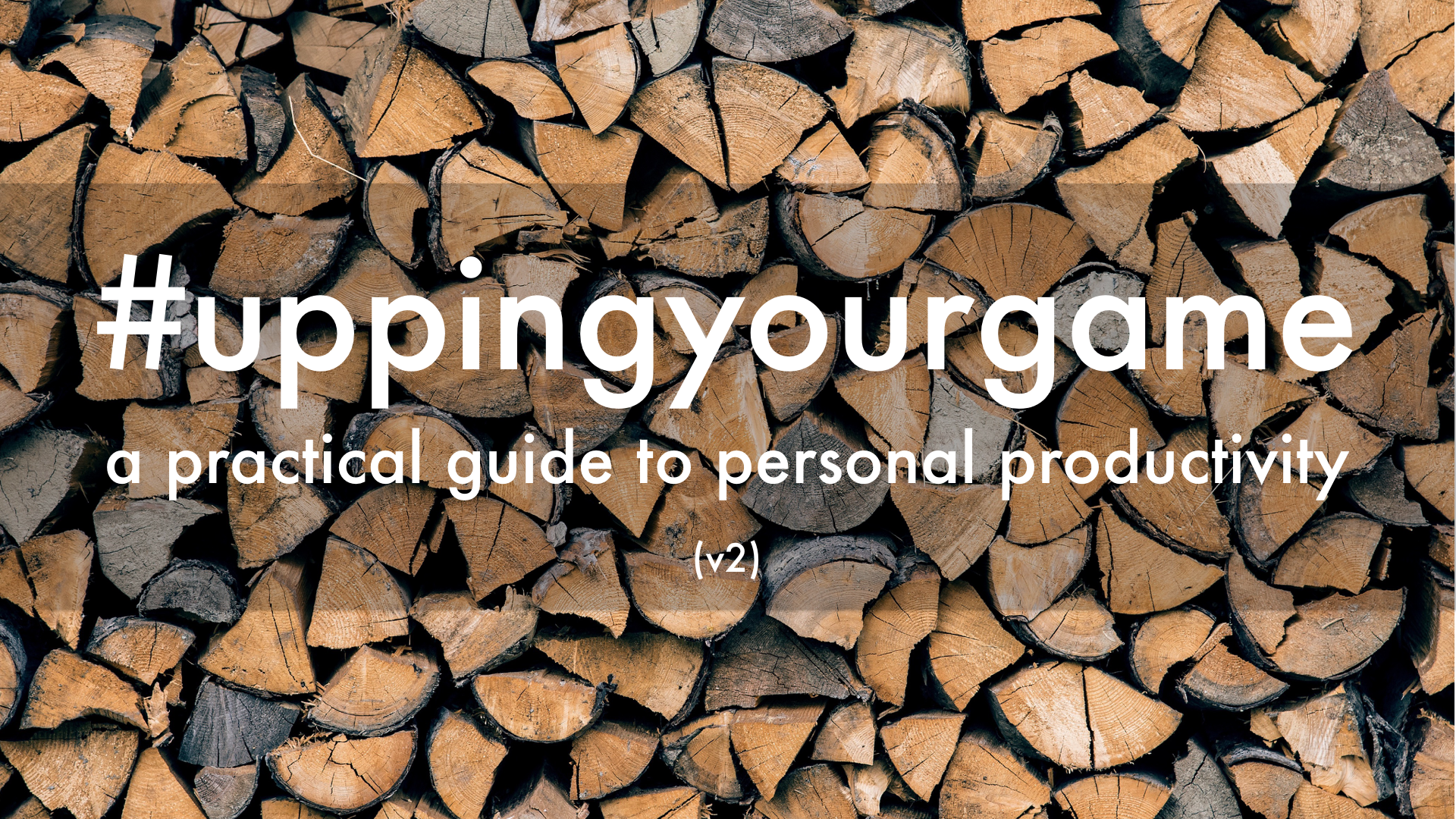10 top email productivity tips
This morning, Robin Dewar, a freshly-minted supporter of my Thought Shrapnel newsletter, got in touch to ask me some advice. What article(s) should he point his team towards to help them improve their use of email?
I realised that there wasn’t one blog post to rule them all, so instead I took the opportunity to go back through relevant articles I’d saved to Pocket. I removed any that were vendor-specific (e.g. Google, Microsoft) and ones that included tips as part of a wider ‘make your life more productive’ article.
The result, which I’ll continue to add to, can be found on my wiki, divided into the following sections:
- In praise of email
- Time management
- Dealing with colleagues and bosses
- Workflow
- Security
- Etiquette
- Dealing with difficult emails
- Misc.
All told, there’s almost 50 articles in there. I’ve chosen my top 10 tips to feature in this post:
1. Turn off notifications
It is absolutely ridiculous that we allow Outlook to check email every 5 minutes, allow our phone to get push messages, or keep a Gmail tab open all the time. This is absolutely killing us in terms of productivity. In 90% of all cases we don’t need to know immediately that there is a new message. Segmenting our email checking time into 2, 4, or 8 times a day has massive benefits. We greatly reduce task-switching penalties, and removing the alerts so we’re not tempted goes a huge way. (Joshua Lyman)
2. Prepare, but don’t send emails on Sunday evening
Sunday is definitely a day for relaxing, but if you’re often overwhelmed come Monday morning, logging in briefly Sunday evening may help you alleviate some of that Monday mania. You don’t need to make calls or even answer emails—simply assess what your Monday game plan will be, and you’ll sleep a little more soundly. (Inc. via Lifehacker)
3. Be concise
Write shorter emails. What is the 1 main thing you want to communicate? Say it concisely. The shorter your emails, the shorter their response tends to be. It saves everyone time. (George Kao)
4. Tell your boss what you’re going to do, and then what you’ve done
I’m convinced 95% of cubicle workers who work over 60 hours a week constantly can cut it down to 40-45 hours by sending 2 emails a week to their boss:
Email #1: What you plan on getting done this week
Email #2: What you actually got done this week
That’s it. These 2 emails will prevent you from working 60 hours a week, while improving your relationship with your boss and getting the best work you’ve ever done. (Robbie Abed)
5. Communicate facts by email and emotion face-to-face
…if you’ve got great news that will get everyone stoked up, it will be more effective and create more positive energy if you deliver it in person. A group meeting to announce a big sales win, for example, is like an instant celebration. By contrast, an email announcing the same win seems a bit like an afterthought. Similarly, if you’ve got bad news or criticism, it will be better received, and more likely to be helpful, if it’s delivered in person. If you use email, it will seem like you don’t care or that you’re cowardly. (Lifehacker)
6. Have multiple channels to message people
Perhaps unsurprisingly, CEOs often point to Slack for helping them cut back on superfluous email back-and-forth so they can give priority to the fewer internal emails to do trade with their teams. Some execs recommend other tools for diverting conversations away from their inboxes, from video-conferencing system Zoom to project-management platforms like Wrike and Trello. (Fast Company)
7. Be positive
Be positive & friendly. Emails can quickly build, or erode, relationships. I always try to come across as encouraging and kind, and start or end my emails with something appreciative about the recipient or the situation. For example, “I appreciate your thoughtful message here.” or “Hoping the rest of your week goes well!” Think of the primary purpose of emails you write to be relational (improving trust and camaraderie in relationships) and secondarily transactional (asking/answering questions, proposing ideas, etc.) (George Kao)
8. Treat emails as if they’re postcards
We live in a time when hackers hack for no good reason whatsoever. We also interact with other humans, who may accidentally stumble on an email left open or snoop because they suck at respecting privacy. Whatever the case may be, when you write something you commit it to a nearly permanent record—at least, once you hit send. If you don’t want other people to know your inner-most thoughts, think twice before sending them to someone. You never know where they may end up. (Awkward Human)
9. Avoid techno-productivism
By focusing relentlessly on making specific tasks or operations easier and faster, instead of stepping back and trying to understand how to make an organization as a whole maximally effective, we’ve ended with a knowledge work culture in which people spend the vast majority of their time trying to keep up with the very inboxes, devices and channels that were conceived for the exact opposite purpose — to liberate more time for more valuable efforts. (Cal Newport)
10. Sign off with ‘thanks in advance’
Among closings seen at least 1,000 times in our study, “thanks in advance” ended up correlating with the highest response rate, which makes sense, as the email’s recipient is being thanked specifically for a response which has yet to be written. There’s a bit of posturing involved with this closing, but it turns out it works pretty well. But no matter how you express your thanks, doing so certainly appears to be your best bet in closing an email if you want a response. (Boomerang blog)
If you’re into upping your game around email-based productivity, you’re going to love my new audiobook. Thanks in advance for investing in it… 😉
Photo by Joanna Kosinska on Unsplash


